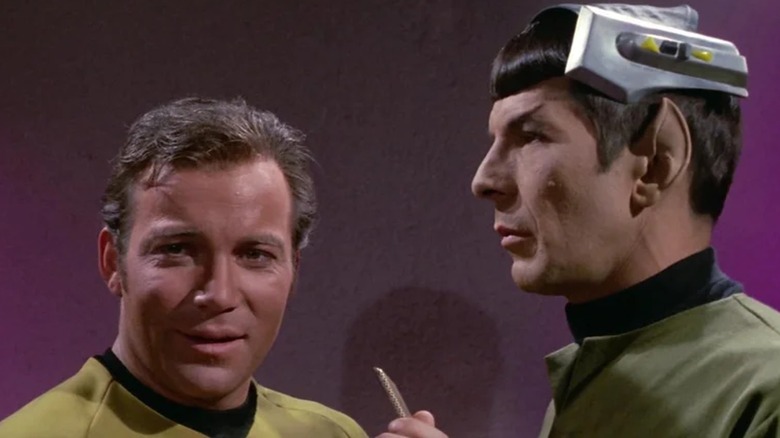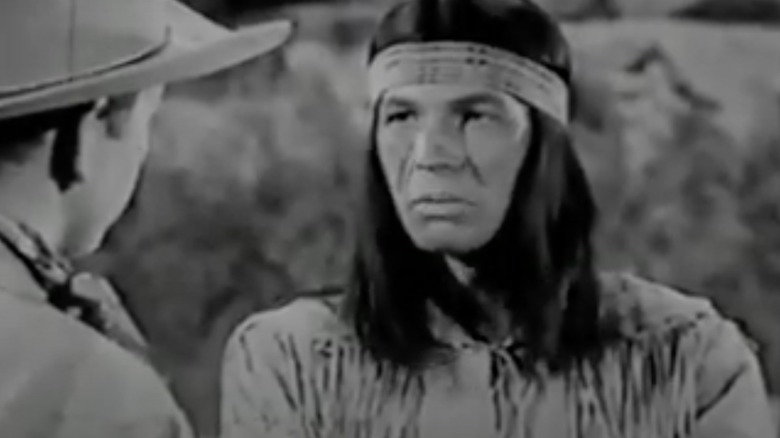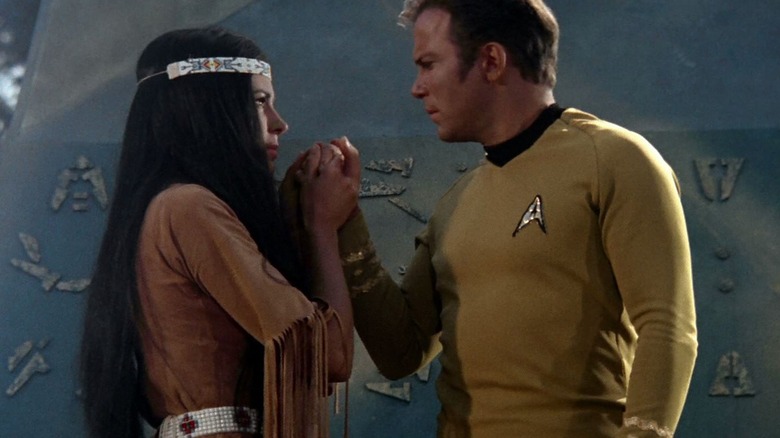CBS
Leonard Nimoy, one of the most adored television actors of the 20th century, had a complex relationship with his early career roles. Despite his Jewish heritage and upbringing as the child of Ukrainian immigrants, Nimoy confessed in various interviews that he often portrayed Native American characters in his pre-“Star Trek” days. This included playing a Comanche warrior in the TV show “Tate,” Chief Black Hawk in the film “Old Overland Trail,” and a Native character seeking justice for his slain white friend in an episode of the immensely popular “Gunsmoke.”
In a 2000 interview with the Archive of American Television, Nimoy reminisced about his time on “Gunsmoke” with fondness (he passed away in 2015). He had met James Arness, the star of the long-standing Western series, when they were both part of the same acting group. Even after Nimoy joined the military, he maintained his connection with Arness. One day, Arness informed him that he had secured the leading role in the television adaptation of the much-loved radio show – “Gunsmoke.” Nimoy made several appearances on the show over the years, but it was his final appearance in 1966 that left the most significant impression on him, and which is now considered quite controversial.
“The last job I did before I started shooting ‘Star Trek’ was a guest-starring role in ‘Gunsmoke,'” Nimoy recounted in the retrospective interview. “I had already done the ‘Star Trek’ pilot and was hired for this episode – playing an Indian.” Specifically, Nimoy portrayed a character named John Walking Fox, who was the focus of an episode in season 11 titled “The Treasure of John Walking Fox.” Nimoy had taken on this role while waiting for the confirmation on “Star Trek” after initial pilots had failed. He praised the “clever” script by Clyde Ware. However, looking back, the story seems less clever and more guilty of racial stereotyping.
Nimoy’s Role as the Mysterious Native American John Walking Fox

Paramount
As Nimoy recalled, the episode’s storyline revolved around an Indian fur trapper who was good friends with a white man who shared the same profession. They often went trapping together. The white man was eventually killed during a dispute with a broker. According to Nimoy, “there wasn’t going to be any justice for this friend of John Walking Fox.” The Native character then paid for his friend’s funeral in gold, causing a rift among the town’s criminals (including his friend’s murderer) by pretending to possess a gold treasure. The murderer was eventually killed in the ensuing fight over John’s supposed treasure. “There is no treasure, but he built this story,” Nimoy said. “So it’s kind of a wry way of getting some social justice.”
The term “social justice” seems rather ironic here, considering that many Native American activists were already battling for recognition and equality in the 1960s while non-Native people were portraying exaggerated versions of them on television. Nimoy told PBS that “the character [of John Walking Fox] was designed to be enigmatic,” and shared some traits with “Star Trek” hero Spock. This, of course, feeds into the stereotypes of the mysterious, stoic Native that were widespread in the Western genre at the time. The John Walking Fox episode isn’t particularly shocking, but Nimoy’s comments about being typecast as a Native American are. “I had played some Indians before, but I think this is the most important Indian role I had ever been given,” Nimoy told PBS in the 2010s. “Most of them were not quite so consequential.”
The Actor’s Troubling Perspective on His Indigenous Roles

Republic Pictures
One might expect that with the benefit of hindsight, Nimoy would have realized why discussing his portrayal of Native American roles as if he was championing better ethnic representation on screen would be misleading. However, it appears the actor never reached that understanding. In Abigail Pobegrin’s book “Stars of David,” Nimoy spoke rather insensitively about being typecast in a racial role that didn’t suit him. “Guys like me were playing all the ethnic roles, usually the heavies — the bad Mexicans, the bad Italians,” Nimoy explained. “And those were the jobs that I took and was happy to get for a long time. I played Indians in Westerns many times.”
Shockingly, Nimoy even claimed in the book that the first Native role he took was “a role that a Native Indian turned down because the Indian character was so unredeemably bad.” But he wasn’t worried about the poor representation because, as he put it, “I was happy to get the work, thank you very much.” This is a heartbreaking, infuriating story presented as something lighthearted. It’s heartbreaking because it suggests that the writers behind the project in question disregarded the valid concerns of the Native actor they initially offered the project to, opting instead to keep the script the same and give the job to a non-Native man. It’s infuriating because Nimoy also portrayed the unnamed Native actor as ungrateful for what he had been given, rather than courageous for standing up against damaging, reductive stereotypes that dominated the industry at the time. Essentially, this story encapsulates everything that was wrong with 20th century Native American portrayals in Hollywood.
The Scarcity of Native American Actors in Hollywood for Decades

Paramount
It would have been nice if there was a “but” at the end of this story or some sort of epiphany that this deeply beloved and talented actor had later in life, realizing that he was actively preventing Native actors from getting roles. However, if such a moment exists, it’s not in any interview I’ve found; Nimoy was still speaking positively about landing Native roles to PBS just a few years before his death. While the actor was responsible for his own actions, he was also a part of a larger racist system. In Arlene B. Hirschfelder and Martha Kreipe de Montaño’s 1998 book “The Native American Almanac: A Portrait of Native America Today,” the authors include a comprehensive yet incomplete list of non-Native actors who took Native roles. “Surely no group has ever been misrepresented in so many movies for so long,” they wrote. “Many Indians feel that in casting, Native actors have occupied a single niche because, until recently, Indians usually were not cast to play Indians. Bankable non-Indian stars got major Indian roles.”
Nimoy’s name is, of course, on the list. But “Gunsmoke” seems to mark one of the last times the actor played a Native American on screen. “Star Trek” took off soon after and made him a household name, and his habit of taking on Indigenous roles with impunity became a thing of the past. In 2011, the actor joked to the Wall Street Journal that the transition from one pigeonholed role to the other made sense. He worked on Westerns, “most of the time playing Indians,” he told the outlet. “[So,] naturally, when I got into science fiction, I had to play an alien.” Yeesh.
FAQs
1. What were some of the Native American roles that Leonard Nimoy played?
– Nimoy played a Comanche warrior in the TV show “Tate,” Chief Black Hawk in the film “Old Overland Trail,” and a Native character named John Walking Fox in an episode of “Gunsmoke.”
2. How did Nimoy feel about his portrayal of Native American characters?
– Nimoy spoke fondly of his roles, particularly his character in “Gunsmoke.” However, he did not seem to fully grasp the implications of a non-Native actor playing Native characters, and was still speaking positively about these roles near the end of his life.
3. What was the impact of Nimoy’s portrayal of Native American characters?
– While Nimoy himself may not have fully understood the implications, his portrayal of Native characters contributed to the ongoing issue of misrepresentation and stereotyping of Native people in Hollywood. This was part of a larger systemic problem in the industry, which often cast non-Native actors in Native roles.
Credit: www.slashfilm.com


